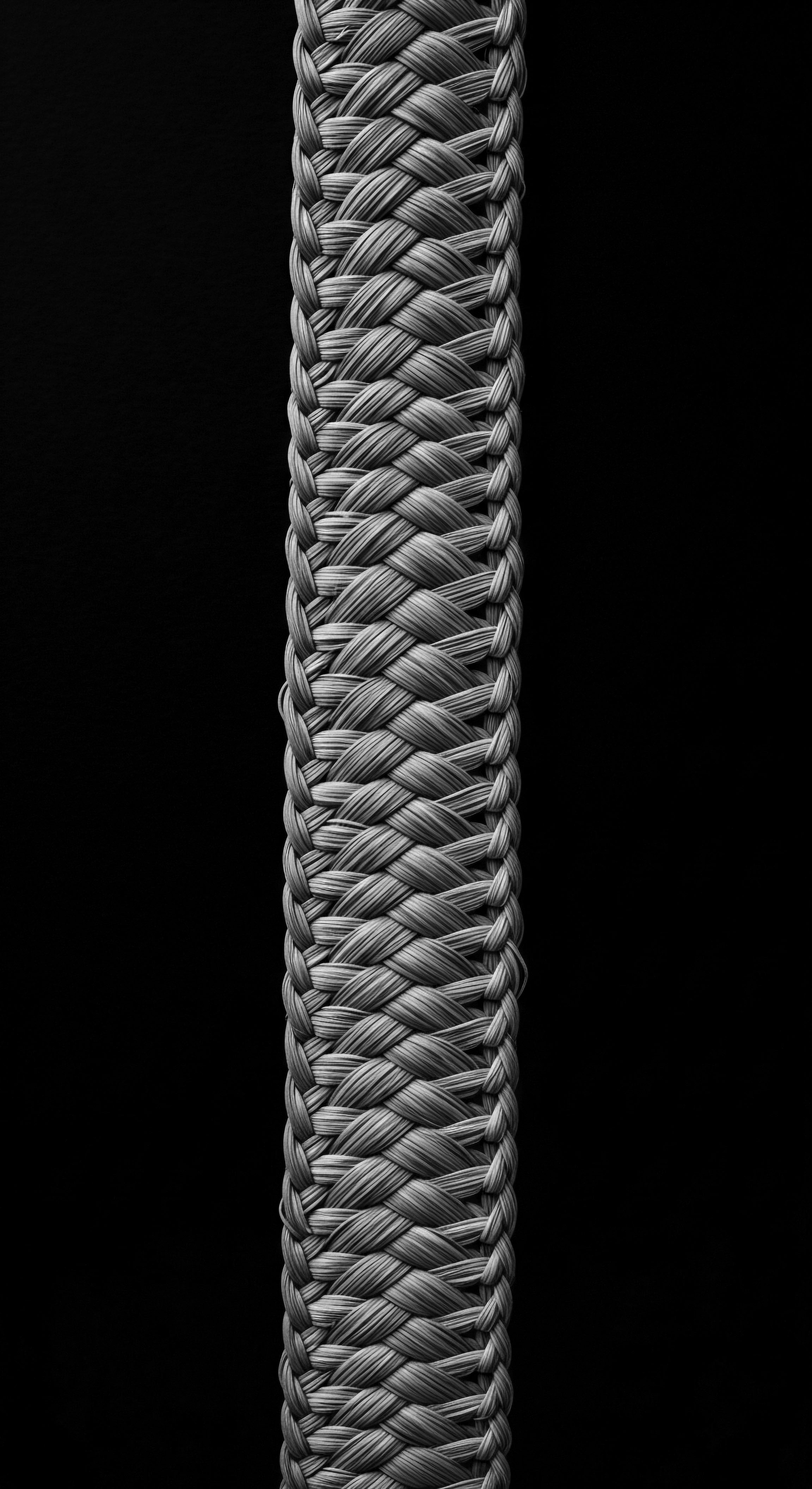
Fundamentals
The journey of understanding Textured Hair Growth commences with an appreciation for its elemental structure, a biological marvel distinct in its formation, yet universally connected to the rhythms of life. At its core, Textured Hair Growth speaks to the physiological process by which hair, characterized by its coily, curly, or kinky patterns, emerges from the scalp and lengthens over time. This is not a simple linear progression, but a dynamic, spiraling ascent from the follicular depths.
Unlike straight hair, which typically grows from a round follicle, textured hair springs from an elliptical or flattened follicle , dictating the helical shape of the strand itself. This inherent curvature, a gift of ancestral inheritance, causes the hair shaft to bend and coil as it grows, influencing how length is perceived and how moisture travels along the strand.
For generations, before the advent of modern scientific tools, ancestral communities possessed an intuitive grasp of this unique growth pattern. They observed the resilient nature of textured hair, its ability to hold intricate styles, and its natural inclination to shrink upon drying. These observations were not merely casual; they formed the bedrock of ancient hair care practices, passed down through the ages.
The methods employed were in direct conversation with the hair’s inherent qualities, seeking to nourish, protect, and honor its spiraling ascent rather than to alter its fundamental form. This deep respect for the hair’s natural state represents a foundational understanding of its growth, long before microscopic explanations were possible.
Textured Hair Growth is a spiraling journey from the elliptical follicle, a biological testament to ancestral design, which has always guided care practices.
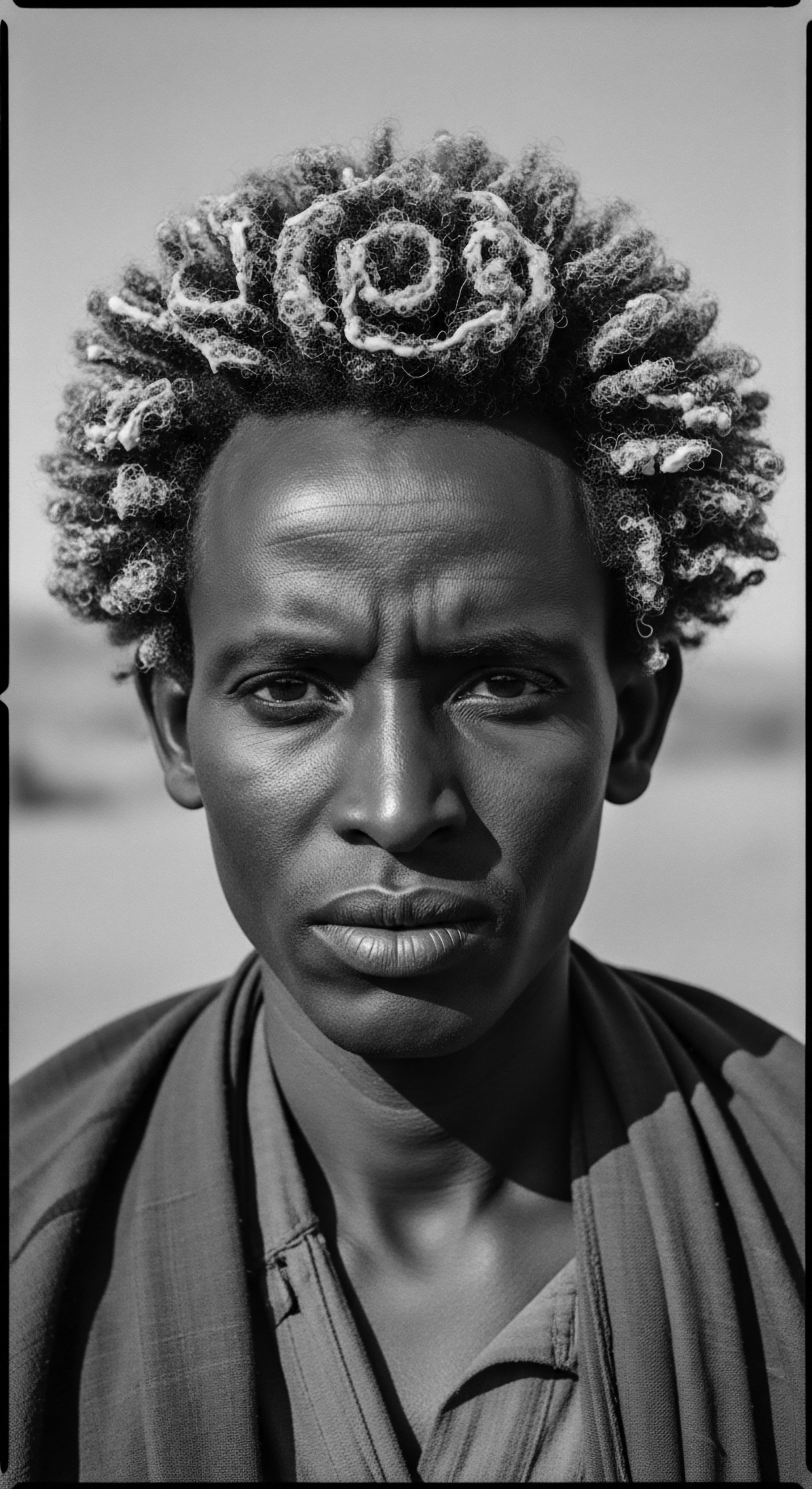
The Hair Follicle as a Living Heritage
The hair follicle, the very birthplace of each strand, serves as a living archive, holding the genetic blueprint for textured hair. Its distinctive shape, often described as a curved cylinder, guides the hair shaft to grow in a spiral or zigzag fashion. This curvature affects the distribution of keratin, the protein that forms the hair, leading to areas of varying thickness and strength along the strand.
The growth cycle itself—anagen (growth), catagen (transition), and telogen (rest)—is a universal biological process, yet its manifestation in textured hair carries specific implications for length retention and overall vitality. Understanding these phases through a heritage lens allows for a deeper connection to traditional wisdom, which often aimed to prolong the anagen phase through gentle handling and nourishing rituals.
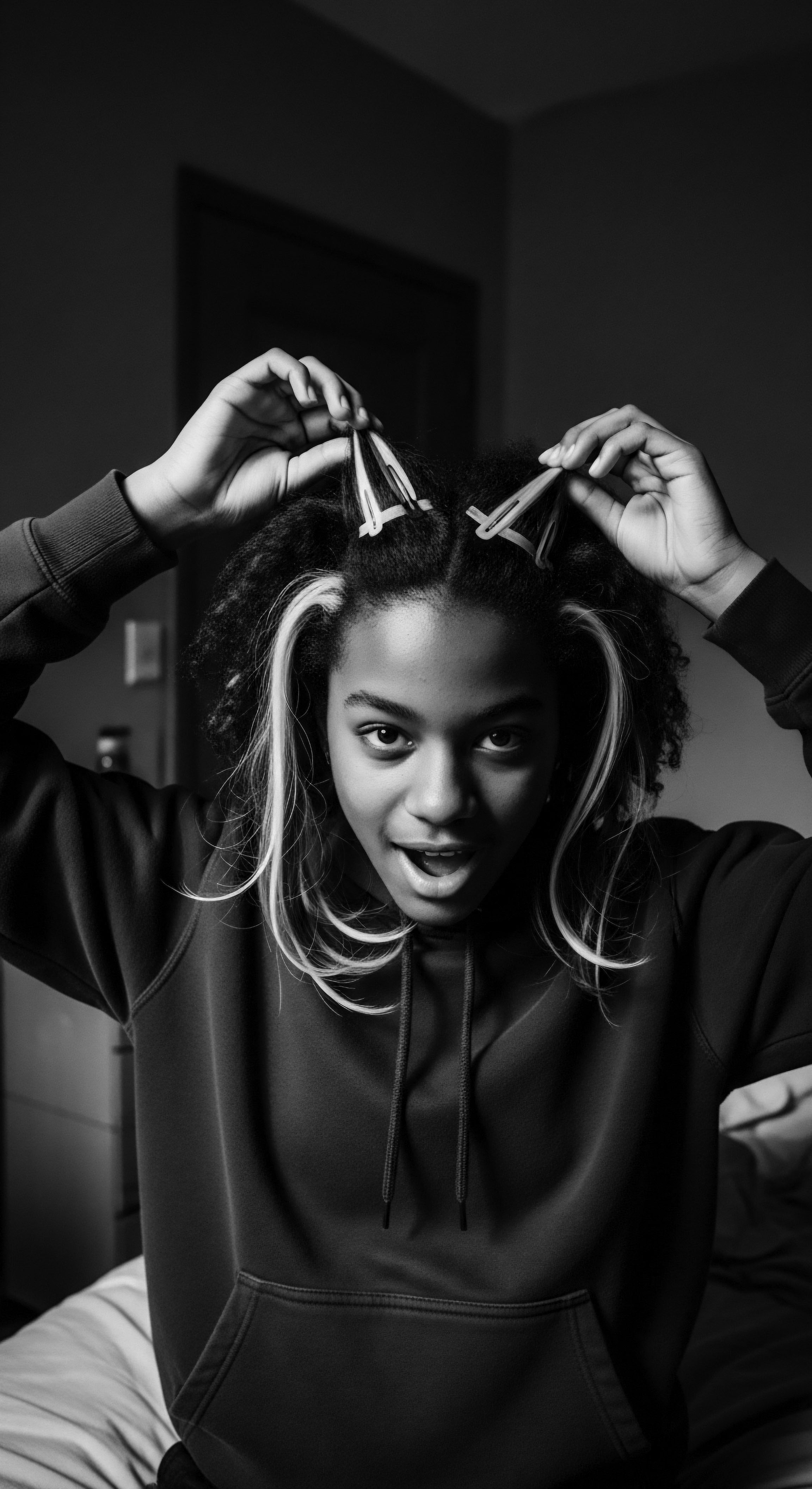
Early Understandings of Hair Vitality
Ancient African societies, in particular, recognized the visible signs of healthy hair growth as indicators of well-being, fertility, and spiritual connection. Hair was seen as an extension of the soul, a conduit to the divine, and its flourishing was celebrated. The earliest forms of hair care were not merely cosmetic; they were holistic practices interwoven with daily life, community bonds, and spiritual reverence.
These practices, from communal grooming sessions to the application of natural botanicals, sought to maintain the scalp’s health and the hair’s strength, thereby supporting its natural growth trajectory. The collective wisdom around hair vitality predates formal scientific inquiry, stemming instead from generations of observation and hands-on experience.
- Keratin ❉ The fibrous protein building block of hair, unevenly distributed in textured strands, contributing to their unique shape.
- Melanin ❉ The pigment determining hair color, residing within the cortex of each strand.
- Follicle Shape ❉ The defining characteristic for textured hair, an elliptical or flattened opening that shapes the growing strand into coils and curls.
- Sebum Production ❉ The natural oil from sebaceous glands, which struggles to travel down the curves of textured hair, often leading to dryness and a need for external moisturization.
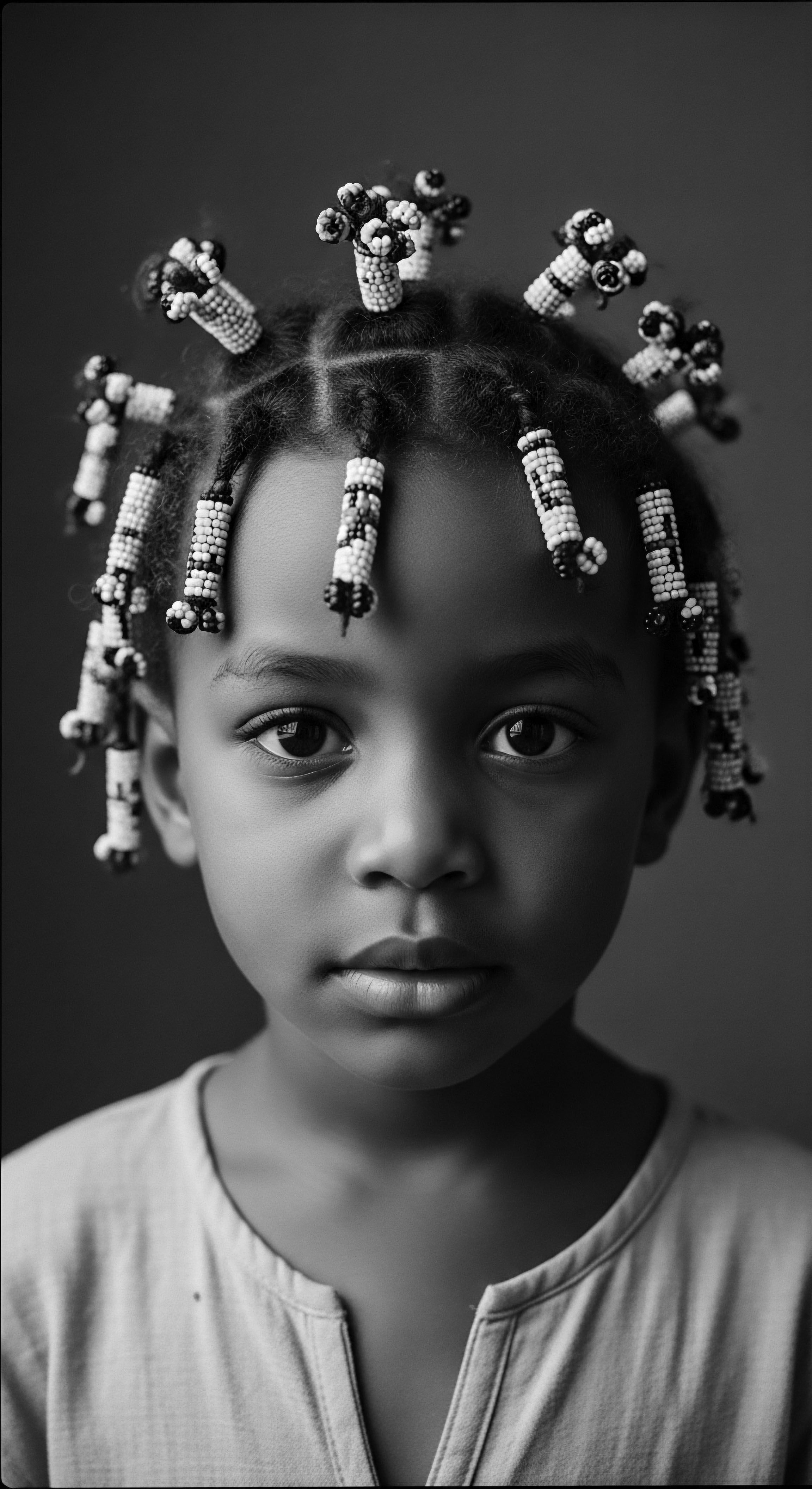
Intermediate
Stepping further into the understanding of Textured Hair Growth, we encounter a more intricate dance between biological predisposition and environmental influence, all viewed through the profound lens of cultural practice. The specific morphology of the textured hair follicle, often asymmetrical, results in a complex helical structure of the hair shaft. This structural particularity means that each individual curl, coil, or kink represents a point of potential fragility, where the hair’s natural twist creates opportunities for tangling and breakage.
The journey of growth for textured hair, therefore, is not solely about the rate at which new cells are produced at the root, but critically, about the ability of the older hair along the shaft to retain its length without succumbing to external stressors or internal weaknesses. This emphasis on length retention as a key aspect of perceived growth is a concept deeply embedded in the historical care regimens of Black and mixed-race communities.
The historical response to the unique properties of textured hair was one of ingenious adaptation and resourcefulness. Across the African continent and throughout the diaspora, communities developed sophisticated care rituals and employed indigenous botanicals that directly addressed the hair’s need for moisture, protection, and gentle handling. These practices, often communal and intergenerational, fostered an environment where hair could flourish, its natural growth honored and supported. The collective knowledge, accumulated over centuries, formed a living pharmacopeia of natural ingredients and techniques, demonstrating a profound understanding of hair vitality that resonates with modern scientific inquiry.
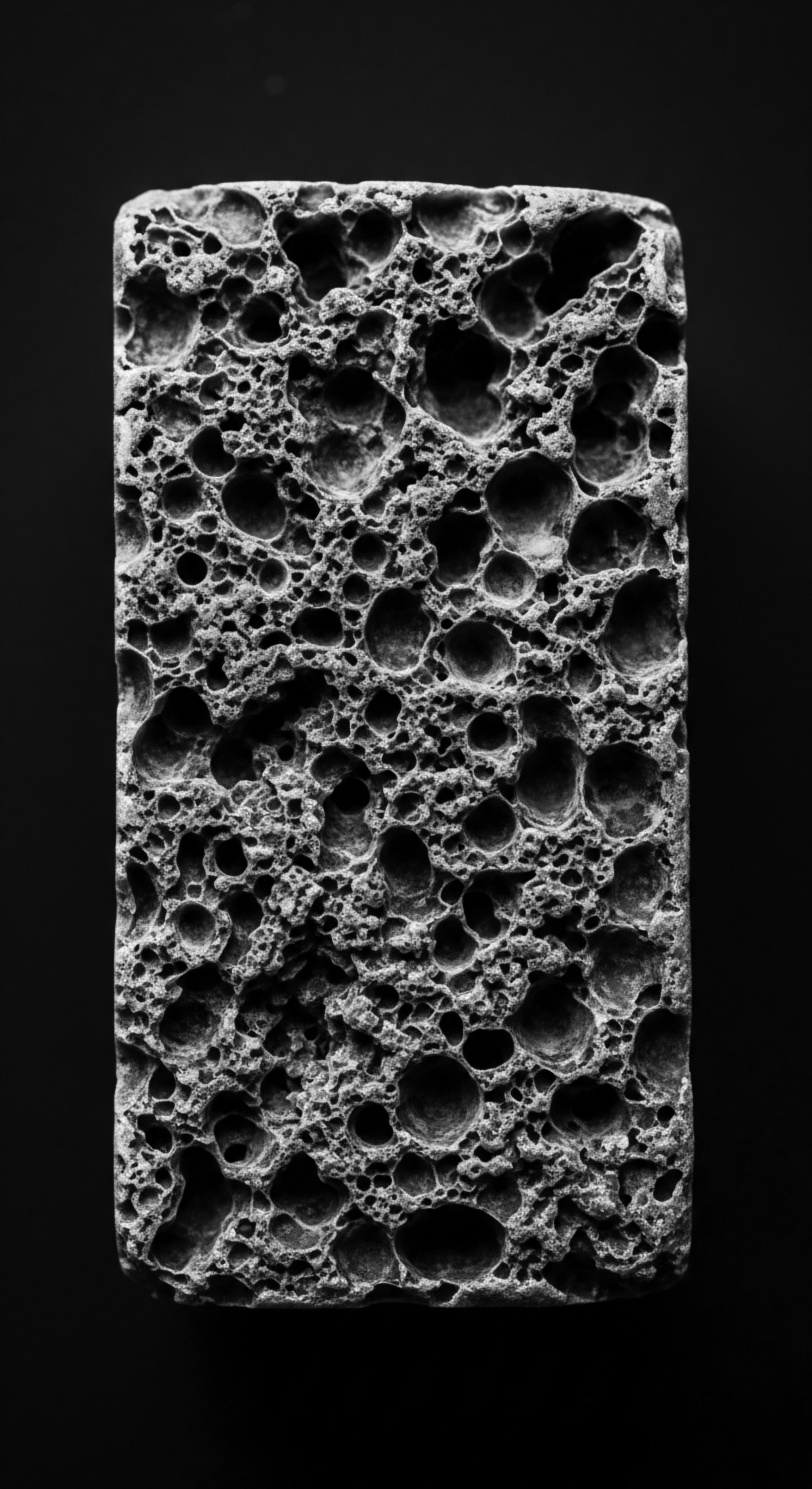
The Geometry of Growth
The science of textured hair growth reveals that the follicular canal, rather than being straight, exhibits a distinct curve. This curvature influences the shape of the hair fiber as it emerges, causing it to twist and turn, forming the characteristic coils and curls. The uneven distribution of disulfide bonds within the keratin structure, a direct consequence of this follicular asymmetry, contributes to the hair’s spring-like elasticity and its tendency to shrink significantly upon drying.
This shrinkage, while a natural attribute, can mask the actual linear growth of the hair, leading to a common misconception about slower growth rates. A deeper understanding of this phenomenon acknowledges the hair’s true linear growth, while appreciating the unique visual expression of its length.
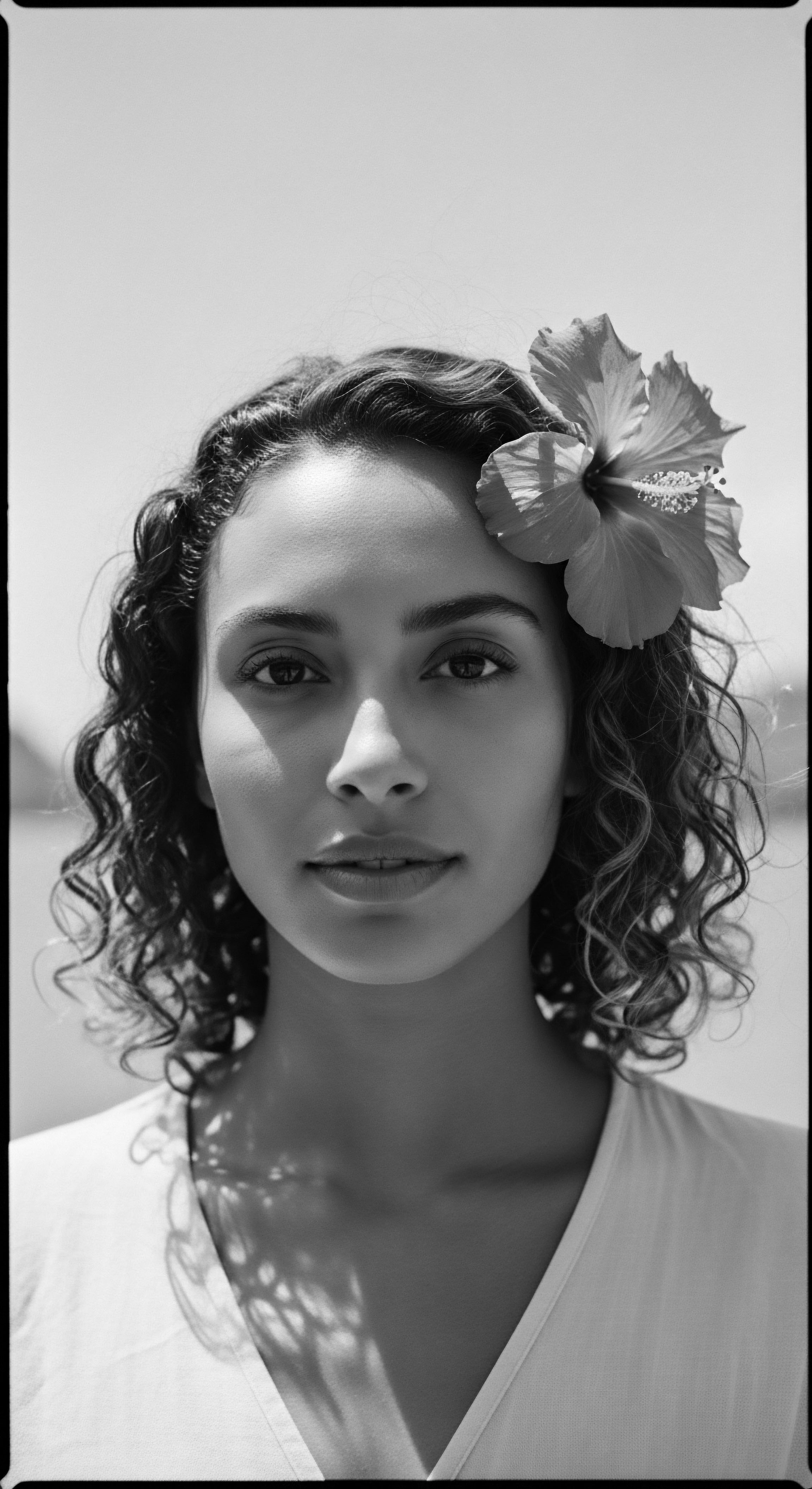
Ancestral Hair Alchemy
Ancestral communities were astute observers of their environment, recognizing the properties of local plants and natural substances that could nourish and protect their hair. This ancestral hair alchemy involved the careful selection and preparation of ingredients to create potent remedies for hair vitality and scalp health. The application of butters, oils, and herbal infusions was not random; it was a deliberate practice aimed at sealing in moisture, strengthening the hair shaft, and providing a protective barrier against environmental elements. These traditions highlight a long-standing commitment to working in harmony with the hair’s natural inclinations, ensuring its sustained growth and well-being.
Consider the use of Chebe Powder by the Basara Arab women of Chad. This traditional hair care remedy, made from a blend of natural herbs, seeds, and plants, is applied to the hair shaft to strengthen strands, prevent breakage, and retain moisture. It does not directly promote growth from the scalp, but by significantly reducing breakage, it allows the hair to achieve impressive lengths, a testament to its effectiveness in supporting length retention. This ancient practice, passed down through generations, exemplifies a sophisticated understanding of textured hair’s specific needs, prioritizing preservation of existing length over a mere focus on cellular production at the root.
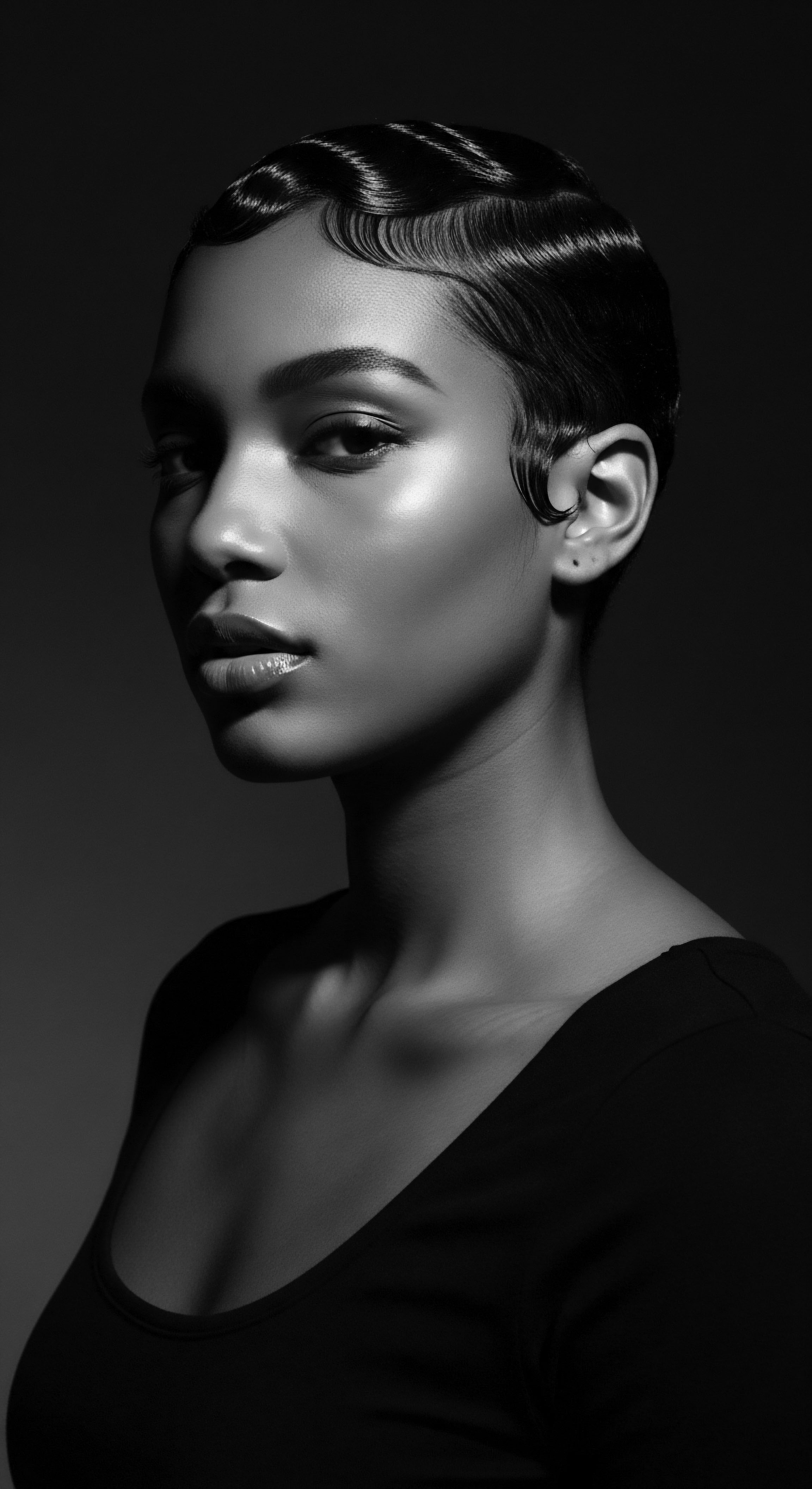
Community and Shared Knowledge
Hair care in many traditional societies was a communal activity, a time for bonding, storytelling, and the transmission of ancestral wisdom. Grandmothers, mothers, and aunties shared techniques, recipes, and cultural meanings associated with hair, reinforcing community ties and preserving a rich heritage. This collective approach to hair care meant that knowledge about promoting textured hair growth and maintaining its health was not isolated to individuals but was a shared resource, strengthening cultural identity and continuity across generations. The very act of grooming became a ritual of connection, deepening the meaning of each strand.
| Ancestral Tool/Practice Wooden Combs/Picks |
| Description and Purpose Carved from natural materials, used for detangling and lifting hair without causing excessive strain. |
| Modern Parallel/Relevance to Growth Wide-tooth combs and Afro picks designed to gently separate coils, minimizing breakage and supporting length retention. |
| Ancestral Tool/Practice Hair Threading |
| Description and Purpose An ancient technique involving thread to stretch and straighten hair, promoting length without heat. |
| Modern Parallel/Relevance to Growth Tension blow-drying methods or stretching techniques that elongate coils while preserving moisture and reducing shrinkage. |
| Ancestral Tool/Practice Herbal Infusions/Rinses |
| Description and Purpose Prepared from medicinal plants, used to cleanse the scalp, condition hair, and address specific scalp conditions. |
| Modern Parallel/Relevance to Growth Herbal rinses, pre-poo treatments, and scalp tonics that balance pH, soothe irritation, and create an optimal environment for growth. |
| Ancestral Tool/Practice Protective Styling (Braids, Twists) |
| Description and Purpose Intricate styles that shield hair ends from manipulation and environmental damage, preserving length. |
| Modern Parallel/Relevance to Growth Modern protective styles that reduce daily handling, allowing hair to rest and retain its cultivated length. |
| Ancestral Tool/Practice These practices demonstrate an enduring wisdom, showcasing how historical methods laid groundwork for current approaches to nurturing textured hair growth. |
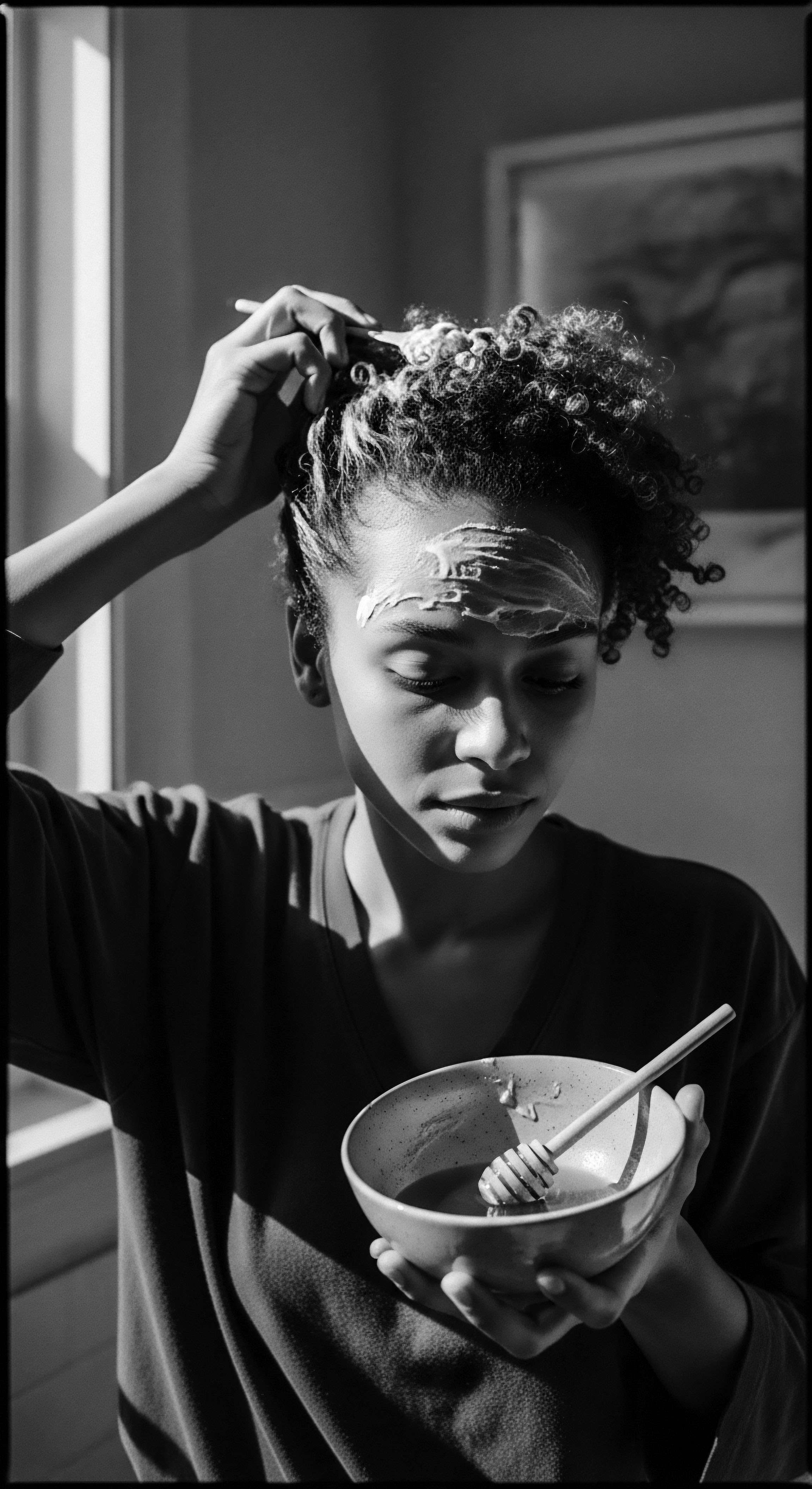
Academic
Textured Hair Growth, from an academic perspective, represents the intricate biophysical phenomenon by which hair fibers, characterized by their unique helical geometry, proliferate from the dermal papilla within an elliptical or highly asymmetric follicular bulb , manifesting as coils, curls, or kinks upon emergence from the scalp. This definition extends beyond mere linear cellular proliferation to encompass the complex interplay of genetic predispositions, the uneven distribution of cortical cells and keratin types, and the resultant propensity for coiling, which significantly influences both the visible length and the susceptibility of the hair shaft to mechanical and environmental stressors. The meaning of Textured Hair Growth, therefore, is not solely a measure of mitotic activity at the root, but rather a holistic consideration of the hair’s entire lifecycle, its length retention capabilities , and its profound socio-cultural significance as a dynamic biological marker interwoven with identity, resilience, and ancestral memory across Black and mixed-race communities. It is a concept that demands an interdisciplinary examination, bridging molecular biology with cultural anthropology and historical inquiry.
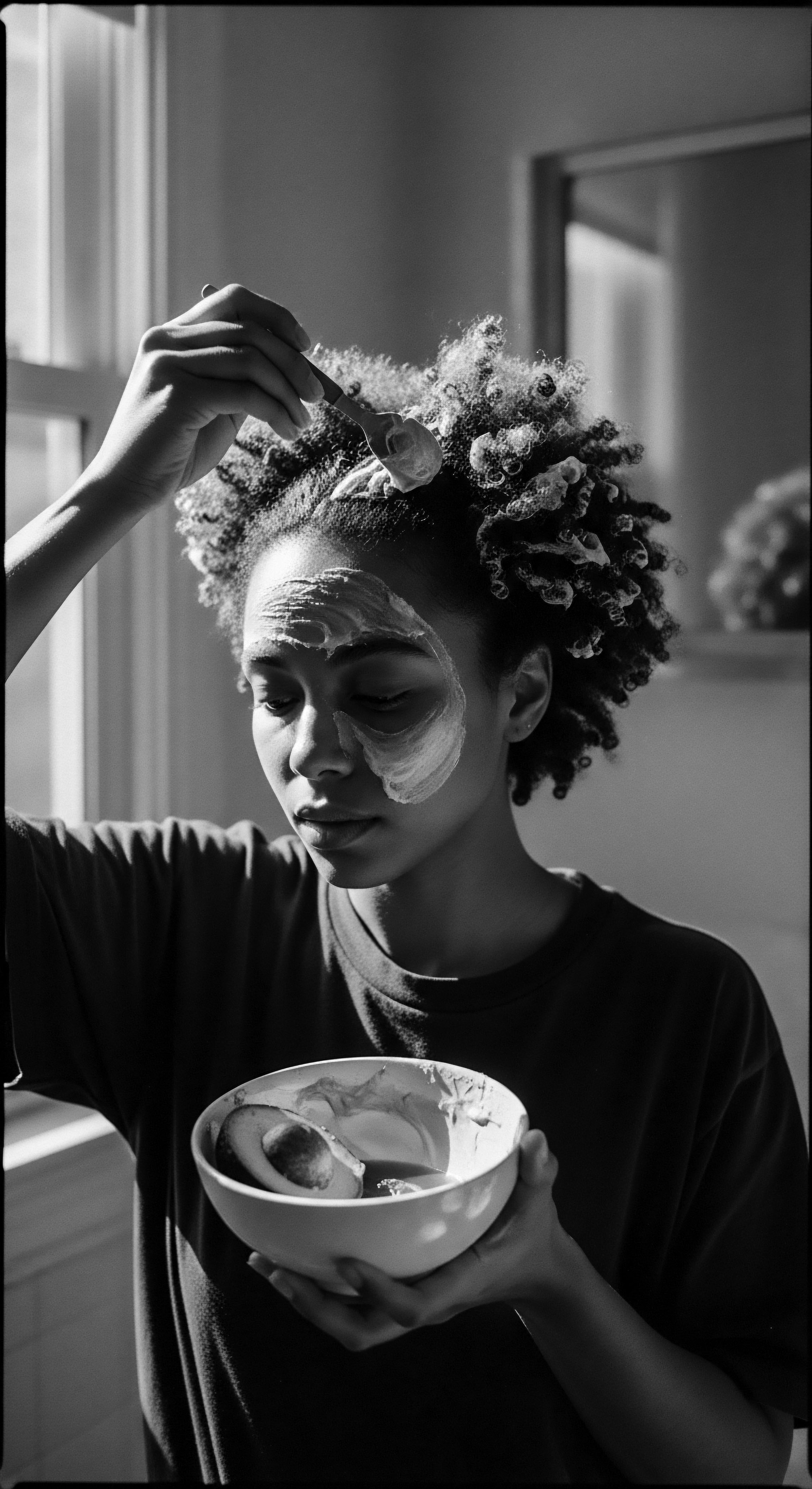
The Bio-Cultural Nexus of Hair Growth
The biological mechanisms underpinning textured hair growth are rooted in the specific architecture of the hair follicle. Unlike the straight, cylindrical follicle that produces straight hair, the textured hair follicle is curved, dictating the curvature of the hair shaft itself. This curvature leads to differential rates of keratinization and an uneven distribution of specific keratin proteins (KAPs), which contribute to the strand’s unique coiling. The hair’s natural propensity to curl means that its true linear growth can be optically minimized due to shrinkage, a phenomenon often misunderstood as slow growth.
The scientific understanding of this biological reality affirms what ancestral practices have long recognized ❉ the importance of managing the hair shaft to prevent breakage and maintain length, rather than solely stimulating root activity. The hair’s capacity to maintain its structural integrity as it grows outwards directly relates to its visible length, a crucial aspect of its perceived vitality within cultural contexts.
Moreover, the rate of growth itself is influenced by a multitude of factors, including genetics, nutrition, overall health, and scalp condition. Traditional African hair care practices, developed over millennia, intuitively addressed these systemic influences. For example, the incorporation of nutrient-rich ingredients like Shea Butter and various plant oils (e.g. Marula Oil, Baobab Oil) into hair regimens provided topical nutrition, contributing to a healthy scalp environment conducive to optimal hair growth and strength.
These practices often included regular scalp massages, which stimulate blood circulation to the follicles, supporting their metabolic activity and promoting healthy hair emergence. The deep respect for these traditional methods acknowledges their efficacy, often validated by modern scientific principles.
Textured Hair Growth is a complex biological process, where the hair’s unique curvature and keratin distribution demand a care philosophy focused on length retention, echoing ancestral wisdom.
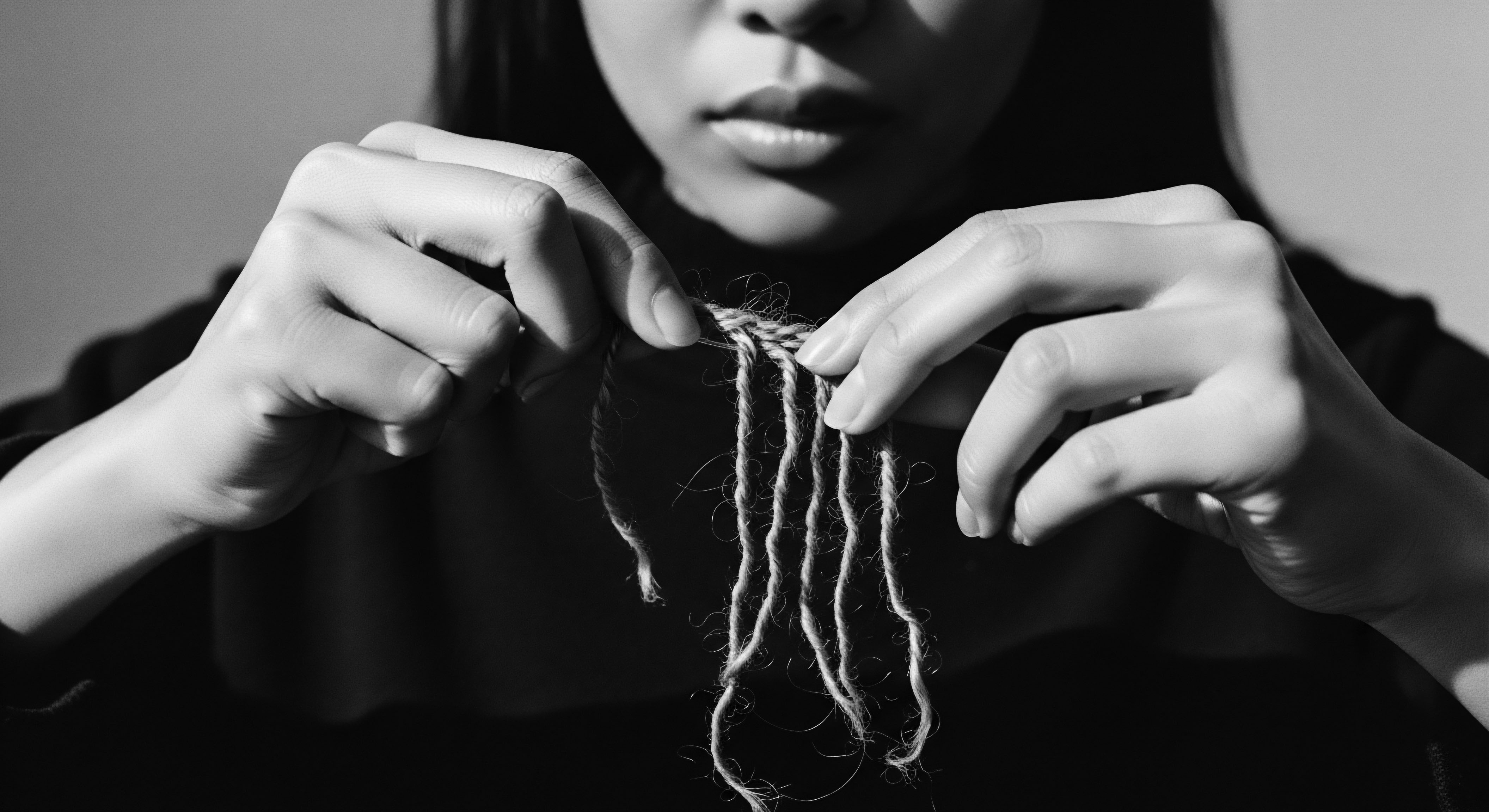
Hair as a Chronicle of Resistance
Beyond its biological aspects, the growth of textured hair holds a profound historical and cultural meaning, serving as a powerful chronicle of resistance and identity. During the brutal era of the transatlantic slave trade, enslavers often shaved the heads of captured Africans, an act intended to dehumanize and sever their ties to their cultural identity. Despite this systematic erasure, enslaved Africans found clandestine ways to preserve their hair traditions, transforming hair into a medium of communication and defiance.
A compelling historical example of this resilience and ingenuity is the documented use of Cornrows as Covert Maps during the period of enslavement. In various parts of the Americas, particularly in regions like Colombia, enslaved African women would intricately braid patterns into their hair that mimicked the routes and topography of escape paths, embedding rice seeds within the braids as a means of survival. This practice, recounted in historical narratives and oral traditions, required not only exceptional skill in hair manipulation but also healthy, growing hair capable of holding such detailed designs. The ability of the hair to grow, to be manipulated, and to sustain these hidden messages became a literal tool for freedom.
This powerful act demonstrates how the very growth of textured hair, when nurtured and shaped with ancestral knowledge, became a silent yet potent form of resistance against oppression, preserving not only lives but also cultural memory and dignity. This deep historical context elevates the understanding of textured hair growth beyond mere biology, positioning it as a living testament to survival and cultural continuity.
The legacy of such practices continues to shape contemporary understandings of textured hair growth. The “good hair” versus “bad hair” dichotomy, a lasting scar of colonial beauty standards, historically pressured Black individuals to chemically alter their hair to conform to Eurocentric ideals, often at the expense of hair health and length. The contemporary natural hair movement represents a powerful reclamation, a conscious decision to honor the natural growth and texture of hair, thereby reconnecting with ancestral aesthetics and challenging oppressive beauty norms. This movement, deeply rooted in cultural pride, recognizes that true hair vitality lies in accepting and nurturing the hair’s inherent characteristics, allowing it to flourish in its natural state.
- Identity Marker ❉ In pre-colonial Africa, hairstyles communicated age, marital status, social rank, tribal affiliation, and religious beliefs.
- Spiritual Connection ❉ Hair, as the highest point of the body, was often seen as a conduit to the divine and ancestors, with specific rituals honoring its growth and vitality.
- Resistance Symbol ❉ During enslavement and civil rights movements, natural hair became a powerful emblem of defiance against Eurocentric beauty standards and a statement of Black pride.
- Communal Bonding ❉ Hair grooming was a shared activity, strengthening community ties and facilitating the intergenerational transmission of knowledge and cultural heritage.
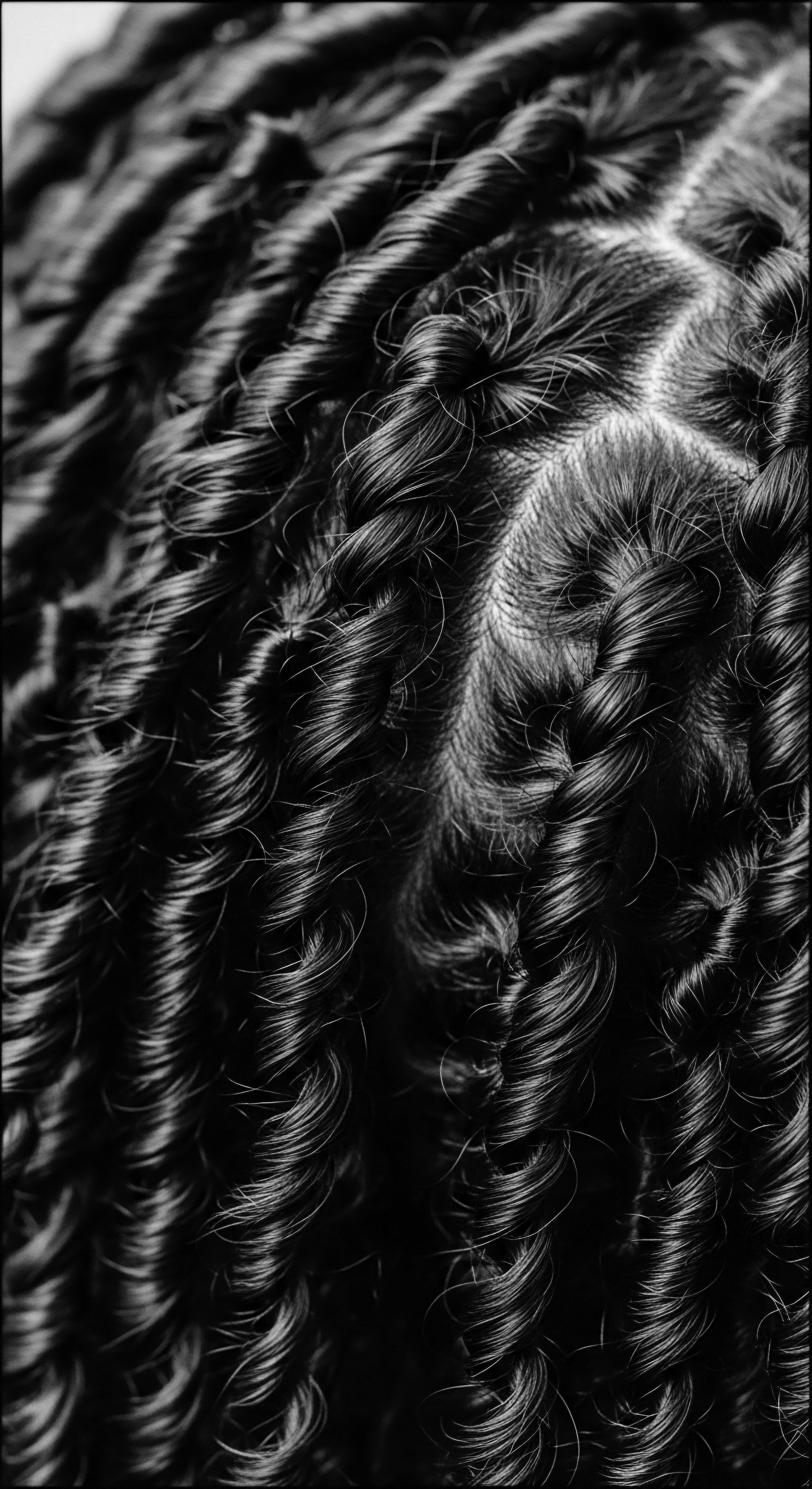
Contemporary Affirmations of Ancestral Wisdom
Modern academic inquiry, particularly in fields like psycho-dermatology and the psychology of hair, is increasingly validating the deep psycho-social significance of textured hair. Dr. Afiya Mbilishaka, a clinical psychologist and hairstylist, has pioneered the concept of “PsychoHairapy,” which uses hair care settings as entry points for mental health support. Her work underscores the profound connection between hair, identity, and mental well-being, recognizing that hair care is not merely aesthetic but a powerful ritual of self-love and cultural affirmation.
This approach resonates deeply with ancestral practices where hair care was inherently holistic, addressing both physical and spiritual aspects of an individual. The salon chair, historically a safe space for communal exchange, becomes a modern hearth for healing and self-acceptance, directly supporting the emotional and psychological environment necessary for individuals to feel confident in their natural textured hair growth.
The ongoing research in ethnobotany also continues to unearth and validate the scientific efficacy of traditional African ingredients used for hair care. Studies are now examining the antimicrobial, antioxidant, and anti-inflammatory properties of plants like Rooibos Tea, Marula Oil, and various clays, confirming their benefits for scalp health and hair strength, which are indirect yet crucial contributors to healthy growth and length retention. This scientific corroboration strengthens the argument for integrating ancestral wisdom into contemporary hair care, creating a more comprehensive and culturally attuned approach to nurturing textured hair growth. The dialogue between ancient practice and modern science enriches our understanding, showing a continuous thread of human ingenuity in honoring the crown that is textured hair.
| Traditional Ingredient Shea Butter (Vitellaria paradoxa) |
| Ancestral Application/Purpose Deep conditioning, scalp moisturizing, protection from sun and elements. |
| Modern Scientific Understanding of Benefit to Growth/Retention Rich in fatty acids and vitamins (A, E), it provides intense moisture, seals the cuticle, reduces water loss, and protects against environmental damage, thereby minimizing breakage and promoting length retention. |
| Traditional Ingredient Chebe Powder (Croton zambesicus) |
| Ancestral Application/Purpose Applied to hair shaft to strengthen, prevent breakage, and retain moisture. |
| Modern Scientific Understanding of Benefit to Growth/Retention Forms a protective coating around hair strands, improving elasticity, reducing friction, and preventing split ends, allowing hair to grow longer without breaking off. |
| Traditional Ingredient Marula Oil (Sclerocarya birrea) |
| Ancestral Application/Purpose Nourishing oil for hair and skin, promoting softness and shine. |
| Modern Scientific Understanding of Benefit to Growth/Retention High in antioxidants and oleic acid, it penetrates the hair shaft, provides deep hydration, protects against oxidative stress, and improves hair flexibility, which aids in length retention. |
| Traditional Ingredient Rooibos Tea (Aspalathus linearis) |
| Ancestral Application/Purpose Used as a hair rinse for general health and vitality. |
| Modern Scientific Understanding of Benefit to Growth/Retention Contains antioxidants and anti-inflammatory compounds that can soothe scalp irritation and promote a healthy environment for follicular function, indirectly supporting growth. |
| Traditional Ingredient African Black Soap |
| Ancestral Application/Purpose Gentle cleansing for hair and scalp. |
| Modern Scientific Understanding of Benefit to Growth/Retention Made from plantain skins, cocoa pods, and shea butter, it cleanses without stripping natural oils excessively, maintaining scalp health, which is vital for new hair emergence. |
| Traditional Ingredient These traditional ingredients, deeply rooted in ancestral practice, offer demonstrable benefits that align with contemporary understanding of hair physiology and contribute to the visible flourishing of textured hair. |
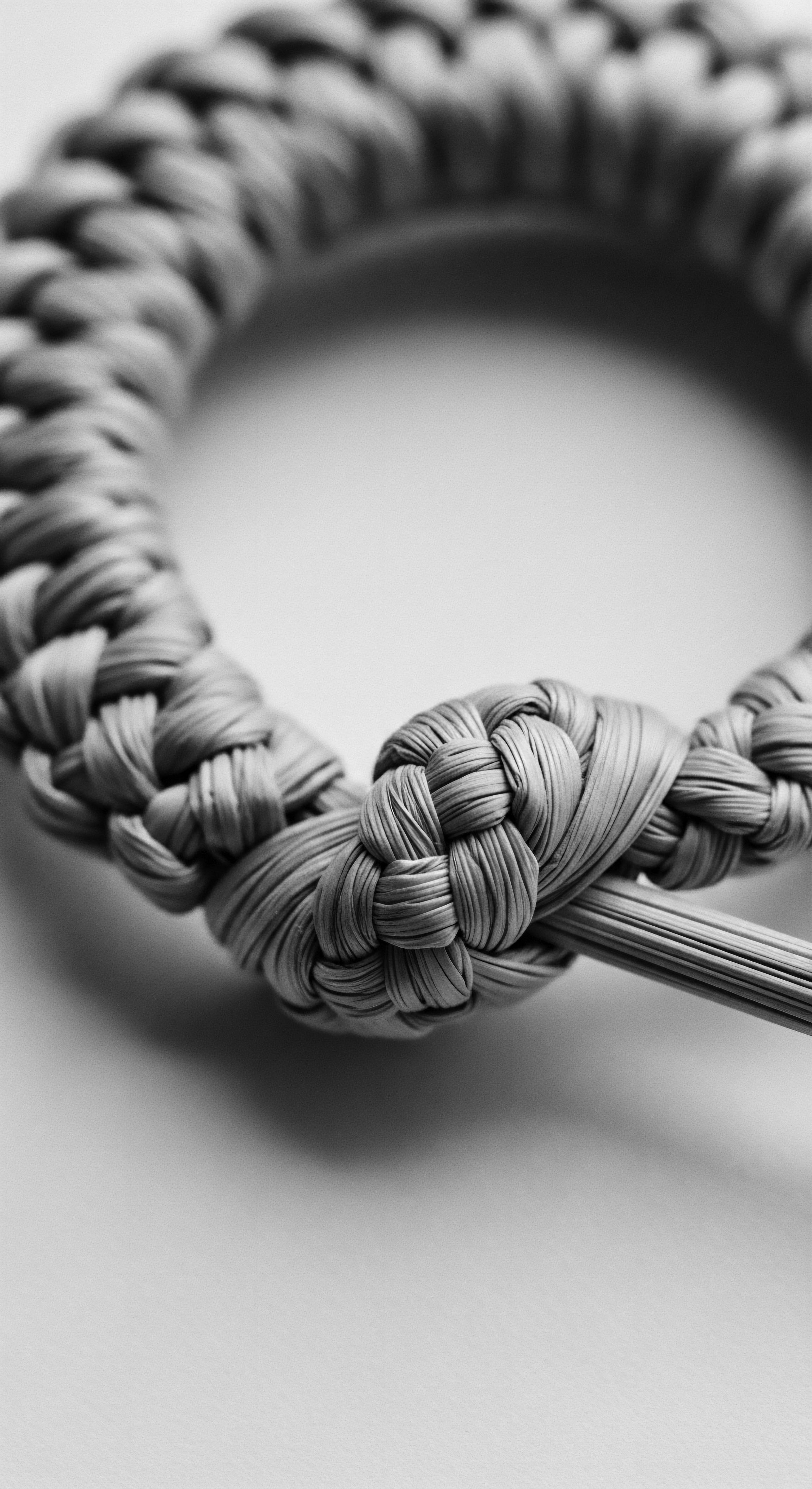
Reflection on the Heritage of Textured Hair Growth
The journey through Textured Hair Growth, from its microscopic origins to its sweeping cultural narratives, reveals a profound truth ❉ hair is far more than mere protein strands. It is a living, breathing archive, a testament to resilience, creativity, and enduring identity. Each coil and curl carries the whispers of ancestral wisdom, the echoes of hands that nurtured, protected, and adorned it through epochs of challenge and triumph. The understanding of its growth is not a detached scientific pursuit but an intimate conversation with lineage, a recognition that the vitality we seek in our strands today is inextricably linked to the practices and philosophies of those who came before us.
The ‘Soul of a Strand’ ethos, which guides Roothea’s mission, finds its deepest resonance in this holistic view of Textured Hair Growth. It invites us to approach our hair not as a problem to be fixed or a trend to be followed, but as a sacred extension of self, a crown of heritage to be honored. The slow, deliberate acts of care, the patient nurturing of length, and the celebration of natural texture become rituals of reconnection, weaving us back into a collective story of beauty and strength. This ongoing dialogue between biological understanding and cultural reverence shapes a future where every strand of textured hair is recognized for its intrinsic worth and its powerful ancestral narrative.
Every coil and curl of textured hair carries the whispers of ancestral wisdom, a living chronicle of resilience and enduring identity.
As we continue to explore the nuances of Textured Hair Growth, we are called to remember that this exploration is a continuous unfolding. It is a commitment to learning from the past, engaging with the present, and shaping a future where the beauty and significance of textured hair are universally celebrated. The path of growth, both for our hair and for our collective understanding, is one of deep respect, informed practice, and an unwavering appreciation for the magnificent heritage that flows from root to tip.
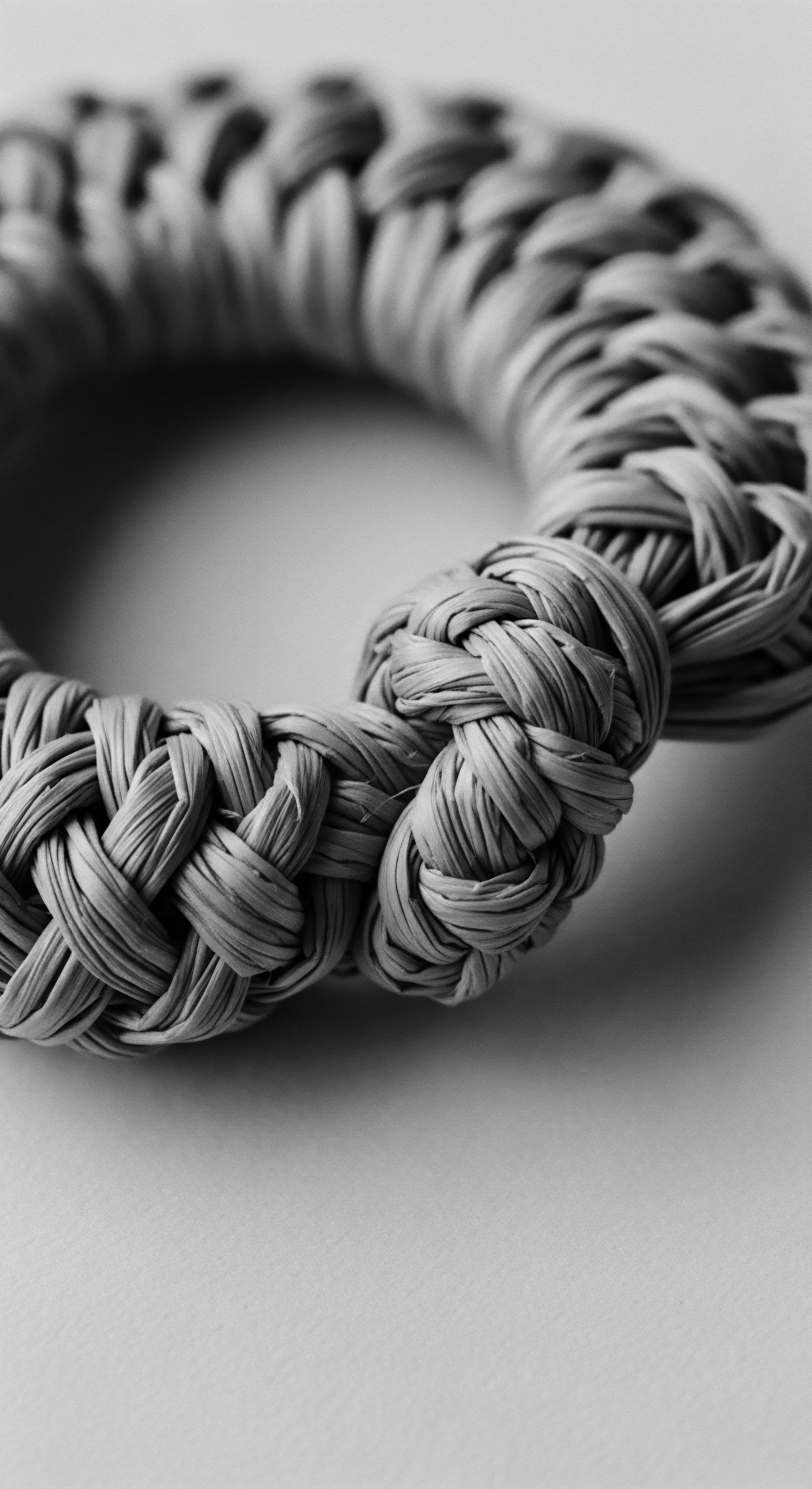
References
- Banks, I. (2000). Hair Matters ❉ Beauty, Power, and the Politics of Women’s Hair. New York University Press.
- Beckwith, C. & Fisher, A. (1999). African Ceremonies. Harry N. Abrams.
- Byrd, A. D. & Tharps, L. D. (2014). Hair Story ❉ Untangling the Roots of Black Hair in America. St. Martin’s Griffin.
- Hill, D. (2024). Rhetoric of Natural Hair ❉ Cultural Contradictions. Advances in Applied Sociology, 14 (9), 504-516.
- Jacobs-Huey, L. (2006). From the Kitchen to the Salon ❉ Language and Cultural Co-Construction in the African American Beauty Shop. Oxford University Press.
- Mbilishaka, A. M. (2018a). PsychoHairapy ❉ Brushing Up on the History and Psychology of Black Hair. Psi Chi.
- Mbilishaka, A. M. Mbande, A. Gulley, C. & Neil, A. (2019). Don’t sweat your hair out ❉ The frequency of exercise for African American women with natural hair. Journal of Exercise and Nutrition, 2 (1), 4–11.
- Mercer, K. (1994). Welcome to the Jungle ❉ New Positions in Black Cultural Studies. Routledge.
- Rosado, S. (2003). The Black Hair Handbook ❉ A Guide to the Art and Science of Hair Care. Black Classic Press.
- Sherrow, V. (2006). Encyclopedia of Hair ❉ A Cultural History. Greenwood Press.
- Thompson, A. (2009). Black Women and the Politics of Hair. Palgrave Macmillan.
